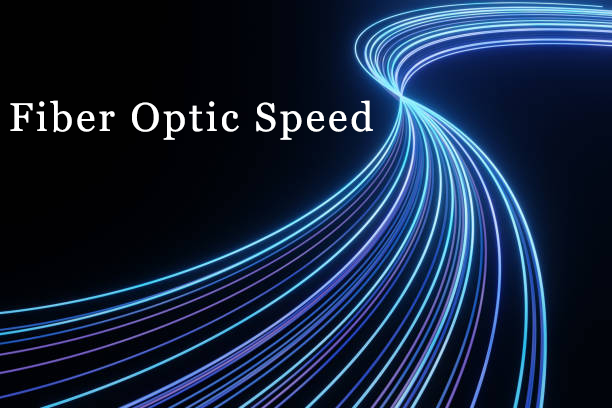In a remarkable achievement, researchers at Aston University in the UK have transferred data at a record breaking rate of 301 terabits per second, a speed 4.5 million times faster than the average Home broadband connection in the UK and 1.2 million times faster than the typical broadband connection in the US. The team demonstrated how the unutilized wavelength bands within the standard fiber optic cables can be used to meet the ever increasing demand for faster and efficient data transmission in the global network.

The Technology Behind the Speed
The success of the researchers was based on the use of a single standard optical fibre and the exploration of previously unutilized wavelength bands, the E-band and S-band, which were unavailable to existing fibre optic systems. The current commercial optical fibres, however, only use C-band and L-band for data transmission. These conventional bands have a limited capacity, which in result leads to the exploration of new wavelength regions.
Aston University researchers in collaboration with international partners from the National Institute of Information and Communications Technology (NICT) in Japan and Nokia Bell Labs in the USA developed an optical processor to expand these additional bands. Dr. Ian Phillips, who developed the optical processor, pointed out that the E-band, which is adjacent to the commonly used C-band, is three times wider and has enormous untapped potential. This new device was used for controlled emulation and transmission through these bands, which is a significant technological milestone.
Greener, Cost-Effective Innovation
One of the most striking features of this accomplishment is its dependence on existing infrastructure. It is rather different from other advancements that often require replacement of the network. The key innovation was the development of new optical amplifiers and processors that expanded the capacity of the fibers without the need for physical upgrade.
This approach has great economic and environmental benefits. Using more of the existing spectrum reduces costs, extends the life of the current fibre optic network and is more sustainable because there is no need for the massive deployment of new cables and the raw materials that go into them.
Implications for the Future
These speeds could revolutionize the world’s communications systems. As the demand for high-speed internet increases with the development of streaming, virtual reality and artificial intelligence, these new techniques are scalable. In this way, internet service providers can enhance data speeds for consumers without incurring prohibitive costs by exploiting underutilured parts of the electromagnetic spectrum.
Furthermore, the research is connected with the general trends in communication technology, which aim at increasing the efficiency of networks. This breakthrough opens up opportunities for improving the connectivity of businesses, including telecommunications, data centers, and smart cities, through enhancing the capacity of the backbone network.
A Collaborative Triumph
This world record is proof of concept of how effective global collaboration can be. The project included researchers from Japan and the USA and showed how people from different countries can share their knowledge to achieve greatness in the field of optical technology. The results were published by the Institute of Engineering and Technology and presented at the European Conference on Optical Communication in Glasgow.

Opinion and New Thoughts.
This is a brilliant concept, both inspiring and practical. It shows that the developers have a good understanding of both technological and real-world constraints. It’s particularly exciting to see that the innovation isn’t about new materials but rather about smarter use of the resources we already have. This strategy is consistent with the vision of sustainable technological development.
In the future, it is clear that this development may help in decreasing the digital divide. It is now possible to extend the access to high-speed internet connection to unreachable areas while incurring minimal costs, thus equalizing the digital divide. Additionally, this Solution is scalable and can be applied to other fields such as telemedicine, autonomous systems, and large data analysis that require high-speed and reliable data transfer.
This breakthrough also has numerous applications in the field of Artificial Intelligence (AI). Since AI systems require large amounts of data and fast processing, the ultra-high speeds that can be achieved with this technology would greatly enhance the training and deployment of AI models. It will enhance model development, improve real-time decision making, and enhance data transfer in edge computing thus driving the development of AI in terms of speed and complexity.

However, the translation of the experiments from the laboratory to real life will require solving some problems. These are the commercialization of optical processors and amplifiers, the training of personnel to install these systems and the standardization of these systems across the globe.
In conclusion, the University of Aston’s achievement is a clear example of how innovation can change the world. The use of unutilized parts of the fiber optic communications system to achieve high speed data transmission has paved way to a faster, connected and sustainable world.

